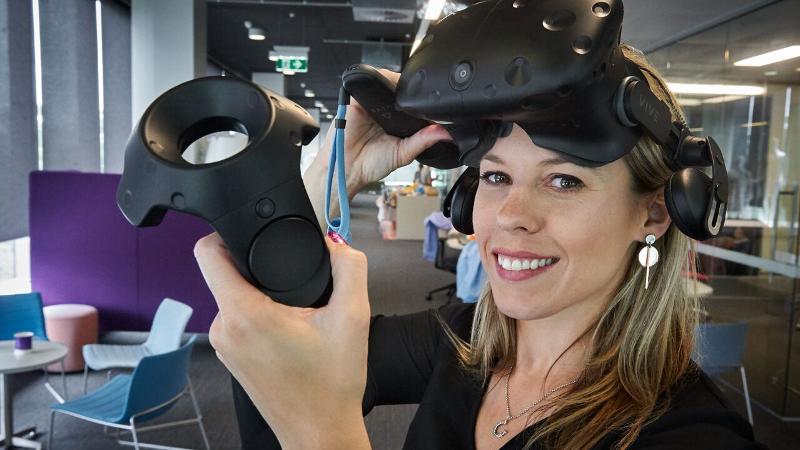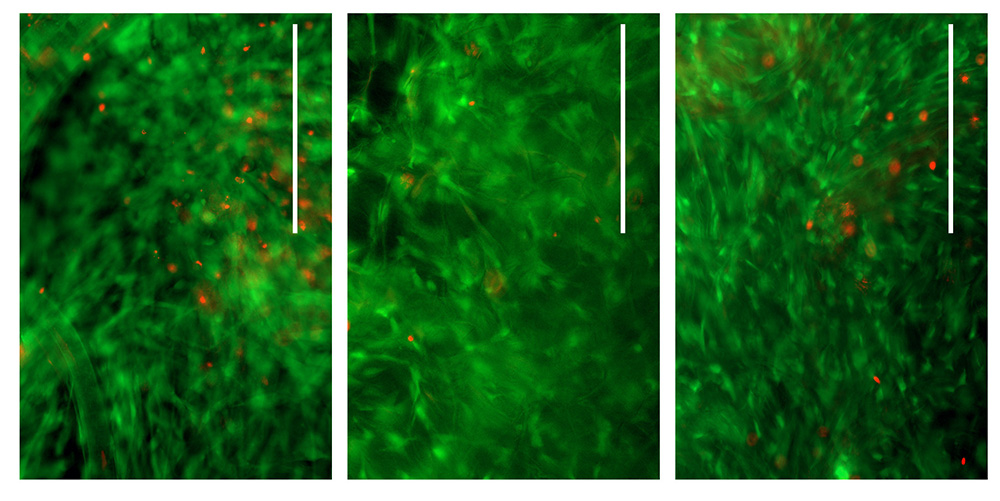
The promise of no more boring, anxious stints in waiting rooms for patients is just one aspect of the hospitals of the future covered in the inaugural Herston Biofabrication Institute Conference tomorrow.
- WHEN: Friday 22 March, 2019
- WHERE: Royal Brisbane and Women’s Hospital Education and Conference Centre, Herston
- WHAT: Covers 3D printing for regenerating tissue including skin, cartilage, eye, bone and vascular tissue as well as virtual reality used to educate, distract and help heal.
- QUT undergraduate students in both engineering and fashion design have been called on to help solve real-world problems.
Clinicians, biomedical scientists and engineers, and health industry representatives will attend the one-day inaugural Herston Biofabrication Institute conference with the theme Building Real-World Clinical Impact.
Institute acting QUT director Professor Mia Woodruff said research in biofabrication for burns and the use of virtual reality were innovations in the care and treatment of burns patients paving the way for faster recovery times.
“Burns treatments are both confronting and painful experiences for burns patients,” Professor Woodruff said.
“We are also developing an innovative use of virtual reality to help patients as part of their therapy to remove them from the challenging landscape of the hospital setting and aid their rehabilitation.”
QUT undergraduate students in both engineering (watch video below) and fashion design (watch video far below) have been called on to help solve real-world problems.
One challenge set by clinicians included designing new methods to help try to distract patients and ease excruciating pain while having their burns cleaned.
QUT researcher Mathilde Desselle (pictured top above) said the games were a fun way for people to engage with medical biofabrication.
“The augmented reality experience is a discovery of biofabrication platforms technologies which are 3D imaging, 3D modelling and 3D printing to heal a patient’s broken skull,” Ms Desselle said.
“Our virtual reality serious game, Biofabrication VR, has been developed with QUT gaming students and features a Hospital of the Future environment in which the player harnesses the power of those biofabrication technologies to heal three virtual patients in need of prosthetics, orthotics and implants.”
The conference program includes research by burns expert Associate Professor Leila Cuttle who is testing different scaffolds to investigate how well human cells grow and survive on them. The aim is to grow new patient-specific tissue for patients with deep burns.

As well as biofabrication research for burns patients, clinicians and researchers will cover biofabrication’s use in cartilage regeneration, reconstruction of eye tissue, orthopaedic surgery, urological surgery, vascular surgery, and cancer care applications, and biomaterials for patient-specific implants.
The conference will include a display of QUT Fashion students’ designs for the future of healthcare uniforms and patient garments after direct consultation with surgeons, nurses, doctors, lab researchers and occupational therapists.
Clinicians and researchers will model the garments on the day of the conference.
Watch below to see some of the designs being fitted on hospital workers ahead of the event.
The Herston Biofabrication Institute is a partnership between Metro North Hospital and Health Service and QUT.
* Biofabrication is set to revolutionise regenerative medicine through the rapid 3D printing of replacement tissue and organs personalised to individual patient needs and the conference will cover latest research and findings in the areas of biofabrication, 3D scanning and printing, 3D modelling, and tissue engineering.







